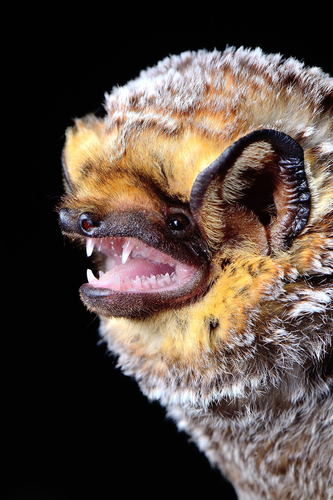
Hoary Bat
With its frosted fur and solitary nature, Lasiurus cinereus, the hoary bat, glides through North and South America's night skies. This migratory bat thrives in diverse habitats, feasting on insects and contributing to natural pest control. Its striking appearance and ecological role make it a fascinating creature.
6-7 years
Lifespan
20.0 - 35.0 g
Weight
Length: 43 cm; Height: 13 - 15 cm
Size
Brown, Grey, Yellow, Black, White
Color
34 days
Age of Weaning
13 mph
Top Speed
Least Concern
Conservation Status
Unknown
Population Trend
Characteristics
The hoary bat (Lasiurus cinereus) is a solitary, migratory bat known for its striking mottled fur, which resembles hoarfrost. It roosts in trees and is found throughout North and South America. This species is nocturnal and preys on moths, beetles, and other insects, playing a crucial role in pest control.
Distribution Range of the Hoary Bat
Lasiurus cinereus, commonly known as the hoary bat, is native to the Americas. It is widely distributed across North, Central, and South America. In North America, it can be found from Canada through the United States and into Mexico. In Central America, it is present in countries like Guatemala and Honduras, and its range extends as far south as Argentina and Chile in South America.
Hoary Bat's Habitat
Environmental Conditions
The hoary bat typically inhabits a variety of environments, including forests, woodlands, and areas with scattered trees. It is adaptable to different climates, ranging from temperate to tropical regions, and is often found at elevations from sea level to high altitudes.
Ecological Niche
Lasiurus cinereus occupies an ecological niche as a nocturnal insectivore, feeding primarily on moths and other flying insects. It roosts in foliage or tree cavities during the day, often choosing trees with dense leaves for cover. The hoary bat is also known for its long migratory patterns, moving between summer and winter habitats.
Copyright @ Nature Style Limited. All Rights Reserved.
 English
English